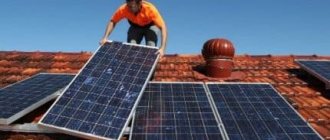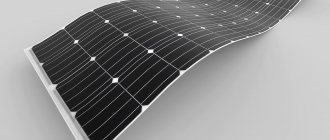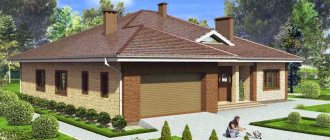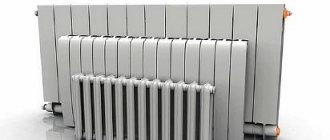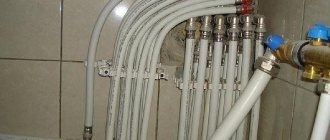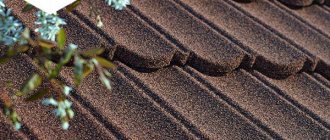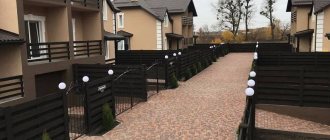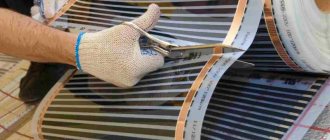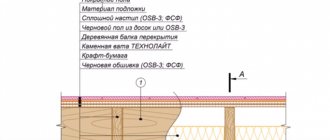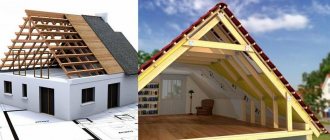Probably everyone has heard about solar energy and the benefits it brings. Renewable sources of electricity have been actively discussed for at least the last 10 years, and after the adoption of the feed-in tariff law in December 2019, this topic became a trend in Russia. And profitable. At least for companies that install solar panels on the roof of a house. But the benefits for the owner of a home solar power plant (SPP) are not so obvious.
Typically, companies selling solar panels lure customers with autonomy, environmental friendliness, savings on electricity, and even earnings from selling it to the state. It cannot be said that they are deceiving. But, as is customary in advertising, they don’t tell the whole truth.
There are cases where installing solar panels on your roof is truly a great investment for the future. In every sense: from preserving nature to making money. But situations where there is not the slightest sense in installing a home solar power plant are also not uncommon. The trick is to learn to distinguish the first situation from the second. And to do this, you need to understand the principles of operation of solar panels, their types and the factors that affect the performance of batteries.
Quick Basics: What Solar Panels Are and How They Work
Solar batteries are modules that consist of several dozen photovoltaic cells connected in series or parallel. As soon as light hits a photovoltaic cell, it begins to produce electricity, and the more intense the light, the more electricity can be produced. In central Russia in the summer, high-quality solar panels for a home can produce about 150 W/m2 at peak and about 120 W/m2 under normal conditions.
The principle of operation of solar panels
Light is a stream of photons, elementary particles with low energy. When light hits a solar cell, the material that makes it up absorbs a small number of photons. Because of this, electrons are released and an electric current arises between the contact layers. And although the energy of each photon is small, there are many of them, so solar panels on the roof of a private house can produce thousands of kilowatts, and the power of large solar power plants amounts to megawatts.
A solar cell consists of seven main layers:
- anti-reflective glass;
- facial contact;
- n-type silicon;
- separating layer;
- p-type silicon;
- back contact;
- substrate.
The top anti-reflective layer protects the photovoltaic cells from damage and moisture, while simultaneously increasing the light-absorbing ability of the panels. It is because of glass that many solar panels have a characteristic blue color. Two types of silicon are needed to create a potential difference when electrons are knocked out by photons. This potential difference is removed from two contacts - front and back - in the form of a direct current with a voltage of about 0.5 V. The substrate is the basis for mounting solar cells, which, like glass, protects the panel from moisture getting inside it.
Due to such a simple design, solar panels have a long service life - 35-40 years. Moreover, the degradation of high-quality batteries is largely due not to the destruction of silicon crystals, but to the darkening of the EVA lining film, which is placed between the photocells and glass.
Types of solar panels
The vast majority of solar panels are made from silicon (Si), but there are promising batteries made from cadmium telluride (Cd-Te) and copper-indium gallium deselenide (CIS or CIGS). Potentially, they will significantly reduce the cost of a home solar power plant, but this is only in the future. So far, only a few companies in the world produce non-silicon solar cells, and their price per watt of power is higher, so such solar panels are almost never used for home use in Russia.
Regardless of the material, solar panels come in three types:
- Monocrystalline . These solar panels are made from a single crystal of pure silicon. They have the highest efficiency - up to 22% - in bright sunshine, and structure degradation occurs more slowly than other types of batteries - manufacturers provide at least 25 years of warranty on monocrystalline cells.
- Polycrystalline . As the name suggests, these panels are made not from one, but from many multi-directional silicon crystals. This affects both the efficiency - it usually does not exceed 18%, and the service life - polycrystalline panels age faster. Nevertheless, in Russia, polycrystalline solar panels are most often installed on the roof of a private house, since they are significantly cheaper than monocrystalline ones.
- Thin film or amorphous . This type of solar panels is the cheapest because they require the least amount of silicon to produce them. The efficiency of thin-film solar panels of the latest generation is only 8-12%, but they work better than crystalline elements in diffuse light conditions - in cloudy weather or in conditions of shading from a nearby tree, amorphous solar panels produce 10-15% more electricity than monocrystalline modules .
In addition to “pure” panels, the operation of which is based on one type of material, hybrid heterostructure (HJT or HIT) solar cells have appeared in the last few years. They use both crystalline and amorphous silicon simultaneously, which increases the efficiency of the panels and improves their performance in conditions of diffuse light and elevated temperatures.
How to choose solar panels
Most people choose solar panels for their roof in much the same way as they choose a coffee maker or vacuum cleaner. That is, they focus mainly on price, advertising and reviews on the Internet. But this approach is fundamentally wrong: no one expects a vacuum cleaner to last at least 25 years, and all this time working outside under the scorching rays of the sun. With such a long service life, reviews from people who installed solar panels on the roof of their house a maximum of a year or two ago are simply not of any value. Not to mention the fact that this is a non-mass product, which is why reviews from real people are literally drowning in the mass of custom ones.
Therefore, when choosing a set of solar panels, we recommend taking into account the following characteristics:
- Manufacturer . This is the key factor. The solar battery manufacturer must be included in the rating of the largest ones and, preferably, it must have a full production cycle: from silicon to the batteries themselves. Yes, you will have to overpay for branded panels, but relatively little - 10-15%, while when buying noname panels there is a risk of losing the entire amount. At the same time, you should not be afraid of Chinese manufacturers; large companies like JA Solar, Suntech or Helios House produce high-quality solar panels. Although, of course, it is better to choose European or North American companies: First Solar, Canadian Solar, Solarworld, Viessmann Group. Solar batteries from Japan and South Korea also have excellent characteristics: Hanwha Solar One, Sharp, Kyocera, Sanyo.
- Tolerance . This is the difference between the rated and actual power of a solar battery. If the actual power is less than the rated power, then the tolerance is negative; if it is more, then it is positive. The tolerance must be zero or positive, because with negative tolerance you are still paying the full price, that is, you are paying for non-existent watts. For cheap panels, negative tolerance is acceptable, but only if it is no more than 2-3%. This means that with a rated power of 100 kW/m2, the panel should produce at least 97-98 kW/m2.
- Temperature coefficient . As the temperature increases, the power of the solar panel decreases. The temperature coefficient represents how much power will drop as temperature increases, so the lower it is, the better.
- PTC value . In order for solar cells from different manufacturers to be compared, they are tested under standard conditions (STC). These conditions are far from realistic, so an independent PTC standard has been developed that better reflects the operating conditions of the panels. The closer the PTC/STC ratio is to one, the better the solar panel will perform on the roof of your home.
- Efficiency of panels . Everything is simple here: the higher the efficiency, the better the panels convert solar energy into electricity. An efficiency of 15% is considered acceptable, but the optimal figure is higher - 18-20%.
- Guarantee period . We have already talked about the 25-year warranty on the panel. This is the minimum period and the de facto industry standard. Therefore, if you want to buy a solar panel for your home rather than a portable solar module for camping, pay attention to the warranty period and always read the terms and conditions carefully.
Now about the price. For most people, this is the main parameter of the system, but we recommend looking at it last. Over a long period of decades, branded and expensive equipment often turns out to be more profitable than cheap ones. Such solar panels age more slowly, produce more power per unit area, and often have not even zero, but positive tolerance. All this in total compensates for the high initial cost after 5-8 years of operation. Of course, we are talking about justifiably expensive equipment. For example, it is better to buy a solar panel for the roof from monocrystalline elements from a top manufacturer than the same panel manufactured by a small company. If you buy panels that are made using the latest technology or fashionable modules in the form of tiles and other roofing materials, then this can hardly be called a rational purchase.
Also, don't look at the price of the entire battery, but at the cost of 1 watt of energy. This is a more informative indicator, since the power of solar panels of the same size, but from different manufacturers, often differs by tens of percent.
What affects the performance of a solar power plant
The maximum performance of a home solar power plant is limited by the performance of the solar panels. But how much electricity the system will generate in real conditions depends on a number of things that are not always obvious to the buyer.
Equipment quality
In addition to the solar panel itself, a home SES includes at least two more devices: a controller and an inverter. And usually they are selected on a residual basis. Because of this, losses on them can reach 20-25%. That is, you will receive only 75% of the energy generated by solar panels only because you did not pay enough attention to the choice of the inverter and controller. For comparison, according to the standard, losses should not exceed 5%.
A high-quality inverter is, first of all, a device with high efficiency - from 95%. Moreover, this must be real efficiency, and not just numbers on the case. For example, medium and small Chinese manufacturers often overestimate the performance of their inverters, but in reality their efficiency can be 85% or even 80%. Therefore, it is better to choose controllers and inverters from European, Japanese or American manufacturers. Products from Chinese factories, with the exception of very large manufacturers, are worth buying only if it is possible to check whether the real efficiency corresponds to the nominal one.
In addition, over time the inverter and controller will need to be changed. And the better quality it is, the later such a replacement will be needed. For example, top-end devices are replaced after 15-16 years, while cheap inverters often fail without serving for even 5 years.
Location
The efficiency of converting solar energy into electrical energy depends on the angle at which the sun's rays strike the panel. In Russia, this angle is maximum if the panels are directed strictly south. In this case, the home solar power plant will produce the greatest power. The southeast and southwest directions are a little worse, but this is also a good option - the power will be lower, but not significantly. Directing the panels to the west, east and, especially, north is undesirable due to a strong decrease in the performance of a home solar power plant.
If the slopes of the house are directed to the west or east, then it is more profitable to place the panels directly on the ground. This installation of solar panels is a little more expensive due to the pouring of the foundation and the need for a powerful frame, but these costs are offset by the greater productivity of the panels.
Insolation level
Not all regions of Russia are suitable for installing solar panels. In the north of the country, including St. Petersburg, insolation levels are too low for solar panels to have acceptable efficiency. This, again, is related to the angle of incidence of the sun's rays, only this time not horizontal, but vertical. And the closer to the south, the higher the sun is above the horizon and the more sunny days there are.
In addition, the angle of inclination of solar panels also depends on geographic coordinates. In the north they need to be placed at a large angle, and as you move south this angle decreases until it becomes almost zero at the equator.
Regardless of the level of insolation, the output of solar panels can be increased by installing them on turntables and connecting them to a sun tracking device. The device rotates the solar panel during the day so that it, like a sunflower, is constantly facing the sun. To do this, the panels are mounted on a holder that is parallel to the polar axis. This is the installation method described by the last line in the table. Rotating devices are very effective, but they are also expensive, so solar panels for the home are rarely equipped with them.
Shading panels
Have you built a house right in the forest in the shade of tall trees? Congratulations - it’s beautiful and environmentally friendly, but it’s unlikely to be possible to install solar panels on the roof of such a house. More precisely, they can be installed, but the effectiveness of the panels in the shade is low. The same applies to any other shadow, for example, from a nearby apartment building or a neighbor’s large cottage. If there is shading, then you need to either remove the obstacle, for example, a tree, or install the panels not on the roof, but on the sunny part of the garden plot.
Types of connections
Individual panels can be combined into complete sets in three ways:
- in parallel - in order to increase the current strength at a constant output voltage;
- sequentially - if desired, increase the output voltage (for example, from 12 to 24 volts), which allows for more efficient use of solar energy, reducing electrical losses;
- according to a mixed parallel-series circuit - in sufficiently large SES it is used to obtain any required electrical parameters of current and voltage at the output.
An inverter is used to output 220 volt alternating current to external devices.
Types of modules we offer
For a solar power plant, you can buy monocrystalline and polycrystalline panels from the world's leading manufacturers and brands - Hevel, DELTA, FSM, One-Sun.
All lines of photovoltaic batteries have certificates of conformity for sale in Russia, Europe and the USA and have the following advantages:
- maximum quality category Grade A according to international standards IEC61215 and IEC61730;
- the highest moisture resistance class IP67;
- warranty from the manufacturer;
- the presence of heavy-duty tempered protective glass;
- automatic soldering on a robotic line;
- reduced resistance on conductive busbars;
- original design.
5 real reasons to install solar panels on the roof of your house
Solar panels are a hot topic. Proponents of this technology attribute many advantages to it, often non-existent ones. Opponents, on the contrary, deny even obvious advantages. The truth, as always, is in the middle. Installing solar panels on the roof of a house is in some cases more than justified due to five reasons:
- Autonomy . For homes far from civilization, solar panels are a real godsend. Unlike generators, which may run out of fuel, the sun will always shine. At least in the next five billion years. Therefore, based on solar panels, it is possible to build a truly autonomous power supply for your home.
- Environmental friendliness . “Greens” actively argue with the environmental friendliness of solar panels, rightly pointing out that the production of some of them requires more energy than can be obtained over the entire period of their operation. But the panels are being manufactured thousands of kilometers from your home, and a gasoline generator is poisoning the air on the porch. Therefore, solar panels are definitely more environmentally friendly.
- Protection against power outages. For security and fire alarms, heating boilers and even refrigerators, long-term power outages lead to problems. Even low-power solar panels provide uninterrupted power to critical consumers in any conditions.
- Saving electricity . Installing solar panels on the roof of a house greatly reduces electricity costs. Moreover, the payback period for the panels is only 7-10 years, depending on tariffs and monthly consumption. Then they begin to generate net profit.
- Increasing the service life of the roof . While this is a side effect of installing solar panels, it doesn't make it any less significant. When installed correctly, solar panels protect a significant part of the roofing material from precipitation and also reduce the amount of ice on the slopes, since they generate heat during operation.
Of course, these benefits must be weighed against the efficiency of solar panels in specific conditions, as well as the cost of the system.
Where to begin
Calculation of electricity costs. To determine the required power of a solar panel system, you need to calculate how much electricity you use. Much in this matter depends on whether a private house is used constantly or only as a summer house in certain seasons of the year. To calculate, take electricity payment receipts for the year and determine the total number of kilowatts spent during this period, then divide by 12 (the number of months) - you will get the average monthly electricity consumption.
Calculation of average monthly electricity consumption
As experience and reviews from real consumers show, in central Russia the result must be multiplied by a factor of 16 to obtain the required battery power in Watts.
Let's look at an example. In a year you spent 1625 kW, divide this figure by 12 months and multiply by a factor of 16 - it turns out 2166 watts. Those. a solar panel system will provide such a house if its power is at least 2200 Watt/hour
How much does it cost to install a home solar power system?
The cost of installing rooftop solar panels mainly depends on two factors: the type of system and its capacity. And if everything is clear with power - the greater it is, the more expensive a home solar power plant is, then we will tell you more about its types.
There are three types of power supply systems with solar panels on the roof of a house:
- Autonomous - expensive, but without worries . In this case, the house receives electricity only from solar panels and possibly a gasoline or diesel generator. For the system to operate, batteries are required, and quite a few: their capacity must be sufficient to ensure uninterrupted power supply at night.
- Connected to the network - inexpensive and simple . In such a system, the lack of energy is compensated from the general electrical network, and the surplus is supplied to it during peak generation times. In this case, batteries are not needed, and you can even make money from the energy given off. But if there is a power outage, the solar panels will also not work.
- Hybrid - optimal for large houses . These systems are equipped with batteries, but after they are fully charged during peak times, the panels do not turn off, but transmit electricity from them to the network. You can also compensate for the lack of electricity from the network, including charging batteries.
Rechargeable batteries are expensive, and they need to be replaced every 3-8 years, depending on the type of battery and mode of use. Therefore, their presence greatly increases the cost of the system. If we take average numbers, then:
- An autonomous system for 1 kWh/day will cost 120-140 thousand rubles , and with a power of 5 kWh/day its price will double - up to 280 thousand rubles . This example shows that in order to estimate the order of prices, it does not matter how much a rooftop solar panel costs from a particular manufacturer. We only need information about the standard price of 1 W of energy, which is approximately 60-65 rubles . The type of solar panels, their manufacturer, the brand of inverter and controller, of course, affect the price, but they change it by tens of percent, and not by several times or by an order of magnitude.
- A system connected to the network for 1 kWh/day will cost 30-35 thousand rubles , and with a capacity of 5 kWh/day its price will increase to 70-80 thousand rubles .
- A hybrid system costs 10-15% more than an autonomous system of similar power due to greater installation complexity.
When calculating the cost of installing solar panels, look at the price of 1 kW of a completely finished system with and without installation. This way you can quickly compare offers from different companies and choose the most profitable one.
Combination of solar energy and stationary network
When planning to use electricity from the sun in parallel with an equipped centralized stationary network, the connection diagram is made slightly different. And the main reason for this decision is that the private consumer does not have the opportunity to “dump” the remaining energy.
And this can provoke voltage surges lasting up to one second.
When combining solar electricity with a stationary centralized network, they are guided by the same rule: the more sources are connected, the more complex the scheme becomes
According to the above diagram, the voltage from the heliofield is first directed towards the battery, and from there it is transmitted to the load.
When designing this installation option, it is worth taking two types of load into account:
- non-redundant – lights in the house, household appliances, etc.;
- redundant – emergency lighting, refrigerator, electric boiler.
Keep in mind: the larger the battery capacity, the longer the backup electrical appliances will work in autonomous mode.
When choosing this method of generating energy into the network, be prepared for the fact that you will have to apply for permission from local power grids.
Despite the fact that inverters for solar panels produce voltage, the quality of which is sometimes higher than that in the centralized network, local power grids do not give the go-ahead for the electric meter to rotate in the opposite direction.
For this reason, according to the scheme, solar inverters stop working when the voltage in the network is lost. And the redundant load begins to be “powered” from the battery.
Installation of solar panels in a private house
Installing solar panels on a roof is a complex task because you not only need to secure the batteries to the roof, but also connect them correctly and assemble them into one system. Therefore, installation must be carried out by specialists. In this case, the preparatory stage of work is the responsibility of the home owner.
At the preparatory stage, you must assess the condition of the roof. Adding solar panels to your home makes major roof repairs very expensive, so you need to be sure that the roof will last at least another 25 years. If you have doubts about this, then it is better to re-cover the roofing.
Make sure that the rafter system can withstand the additional load. On average, the panels themselves weigh 15-18 kg/m2, which is usually not critical. But if the roof is flat, then the batteries are tilted using supporting structures. In this case, snow will accumulate both on the slope itself and on the panels, and then the load can become significant. If this is the case, strengthen the rafter system with supports and additional supports.
Finally, always check which installation kits the builder will be using. Avoid homemade products - branded installation kits are carefully calculated by manufacturers and, most importantly, tested. Therefore, they can easily withstand storm winds and heavy snow cover, which cannot be said about homemade brackets and slats.
For the rest you will have to trust the installation team. At the same time, try to control the quality of work at every stage. A video will help you with this, which shows the features of installing solar panels on roofs made of different materials:
Overview of non-silicon modules
Solar panels made from more expensive analogues reach a coefficient of 30%, they can be several times more expensive than similar silicon-based systems. Some of them still have lower efficiency, while still having the ability to work in an aggressive environment. For the manufacture of such panels, cadmium telluride is most often used. Other elements are also used, but less frequently.
We list the main advantages:
- High efficiency, from 25 to 35%, with the ability to achieve, in relatively ideal conditions, even 40%.
- Photocells are stable even at temperatures up to 150 °C.
- The concentration of light from the luminary on a small panel allows the water heat exchanger to be supplied with energy, resulting in the formation of steam, which rotates the turbine and generates electricity.
As they said earlier, the disadvantage is the high price, but in some cases they are the best solution. For example, in equatorial countries, where the surface of the modules can heat up to 80 °C.
Let's sum it up
Solar panels are a progressive “green” technology that allows you to make your home autonomous and independent of the local electricity supplier. In addition, it can help you save on electricity bills and increase the life of your roof.
When choosing solar panels, you need to consider their manufacturer, tolerance, temperature coefficient, efficiency, PTC and warranty periods. But even the best solar panels will work poorly if you point them not to the south, but to the north, install them in a place where the shadow falls, and save on other elements of the system: the controller and inverter.
The installation of solar panels should be carried out by professionals. But control over the quality of work, as well as the preparatory stage, is usually undertaken by the owner of the house. You need to check the condition of the roof, make sure that it can withstand the additional load and make sure that the batteries are installed on branded mounting kits.
Types of Photoelectric Converters
In industry, there is a classification of solar cells according to the type of device and the photovoltaic layer used.
By device they are divided into:
- panels made of flexible elements, they are also flexible;
- panels made of rigid elements.
When deploying panels, flexible thin-film panels are most often used. They are laid on the surface, ignoring some uneven elements, which makes this type of device more versatile.
Based on the type of photovoltaic layer for subsequent energy conversion, panels are divided into:
- Silicon (monocrystalline, polycrystalline, amorphous).
- Tellurium–cadmium.
- Polymer.
- Organic.
- Arsenide-gallium.
- Indium–copper–gallium selenide.
Although there are many varieties, silicon and tellurium-cadmium solar panels have the lion's share in consumer turnover. These two types are chosen due to the efficiency/price ratio.
Component life
Since solar panels are a fairly new technology, some data on the service life of their components can be approximate. For example, panels - manufacturers usually provide a 10-year warranty on them. At the same time, it is known that in the first 10 years of operation, the electricity generation of the panel drops by 10%, which is directly indicated in the warranty. The service life of the panels is expected to be 25-30 years and after this time, production drops by 20% of the original. That is, over 25-30 years the panel loses only a fifth of its power and continues to work.
Of course, modern manufacturers do not have the opportunity to wait a quarter of a century to find out exactly how solar panels will behave, therefore, they are forced to use special calculation methods. But one fact is clearly recorded - the very first solar panel was put into operation 60 years ago and is still working. At the same time, the drop in its power is no more than 30%.
One of the first modern solar panels - still working Source dailymail.co.uk
Video description
This video shows one of the few places where people are involved in the production of solar panels - a control check:
Customer support
provides support to users at all stages of cooperation - from preliminary consultations and assistance in selecting the optimal equipment configuration, to technical support during the entire period of use of the purchased equipment.
Wide geography of work
The equipment can be delivered almost anywhere in the Russian Federation. We also work with foreign clients - if delivery by transport companies is possible. Any issue can always be resolved individually.
If necessary, the company’s specialists travel to install equipment in many regions of the Russian Federation. The list of cities where you can order equipment installation work is listed on the website, and you can also check it with a consultant.
Choose a convenient way to contact support Source al-energy.ru
Comments:
Max
According to my calculations, my batteries paid for themselves in 3 years. But I use them in my own greenhouse for the irrigation system and lighting.
Petro
5 years is the average payback period. If the battery is fixed permanently. If you rotate it every day after the sun from dawn to sunset, you can reduce this time, but do you want to turn the battery every 3-4 hours every day?
Nikita
Who can tell me how thick the glass above the radiators should be to prevent hail damage on the roof?
Artem
Nikita, I set it to 5mm - I think it’s enough. We were caught in hail and covered in snow. Everything remained intact.
Michael
Either I didn't understand something, or I didn't understand something. Explain in your fingers what the coefficient 16 is and where it comes from. And in general, why exactly 16, and not 25 or 42?
ScottZom
Thank you for the publication, everything is written very correctly!
umbrella
Hello to the author of the section where a large-scale calculation of the power of a geo-installation is given. INTERESTING, when electricity, the phenomenon of magnetic induction and the categories of quantities associated with these phenomena were taught at school, where was the author? He probably played truant (he fed a hippopotamus at the zoo). Since when has electric and any energy been measured in kW (kiliwatts), this is equivalent to measuring flow speed in buckets. Please correct me, it’s a shame that the value of POWER (kW-kilowatt, hp-horsepower) is confused with the value of ENERGY (kW*h - kilowatt-hour, J - Joule)
Amper Voltovich
Test
Amper Voltovich
Nikita, the panel already has protective glass, special, tempered 3mm. Withstands the impact of a steel ball weighing 260g. from a height of 1 meter. The hail is not afraid of anything.
Amper Voltovich
3.2mm thickness and anti-reflective, moreover.
Amper Voltovich
They talk to themselves, they push and puff up, they can’t take off... Without the Green Tariff, it’s not profitable anywhere. Only losses. Installing panels, if there is a network, can only be done by a complete Ipanko, like the author who just got out of the cow and heard the ringing... This is a complete Pezdos!
Amper Voltovich
Umbrella, Bravo! You forgot to indicate that J=1W*sec. Well, you never know, maybe the author forgot, accepted....
Andrey Vitalievich
The site owner needs to have an idea not only about TOE, but also an idea about RES, especially in the direction of presenting material to the audience about payback and calculating equipment parameters. It's a long journey of workshops, self-study, googling and practice. The advice is to delete everything and start all over again. You can watch (not steal) content from colleagues. But don’t forget about the semantics of the content and relevance to queries. You are mistaken in the payback period of 4-5 years; with batteries, solar generators do not pay for themselves even in 15 years!!! Only if there is a state support for microgeneration and grid inverter. Sincerely, Andrey Vitalievich, director of the company.
C8E3EEF0FC
The author’s incorrect use of units of measurement raises suspicions regarding the fact that he understands what he is writing about...
C8E3EEF0FC
In particular, a physical quantity with the dimension kW/hour does not exist in nature. Power is measured in watts (and their multiples: milli-, kilo-, mega-, etc. watts), hp. ... Energy - in Joules, kW*hours, calories, etc. That is, simply put, power = energy/time, respectively: energy = power * time. What is power/time?
C8E3EEF0FC
Sorry about that: “mil-” it meant “mile-”. It’s bad that there is no way to edit a comment that has already been sent.
Zygmund
It is correctly noted that the main criterion is ecology. And there can be no talk of payback.
Alex
https://trinixy.ru/136213-vsya-pravda-ob-effektivnosti-solnechnyh-paneley-10-foto.htm Here is an interesting link to how a person used the system for more than a year.
Alex
payback period is 25 years. calculation at the highest electricity consumption the cost of kW is 3.04 rubles up to 150 kWh / month. 3.81 rubles from 150 to 800 kW h/month. You will never get back these batteries at these prices. In Europe they are installed because of high tariffs, but in our country they are still low. There is no point in buying them...
Dmitriy
You just don’t want to pay your “uncle” - let him walk around gritting his teeth, saying that you have light and warmth, I don’t pay him!
Leave a comment Cancel reply
Related Posts
Types of controllers for solar panels and how to choose
Real Application of Thin Film Solar Cells
Types of solar-powered garden lamps and lanterns, how and where to use them.
Power bank with solar battery - calculation for illiteracy
